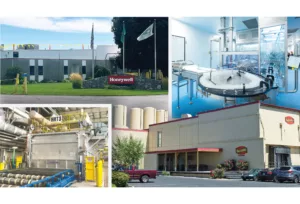The Journal's View: Cities obliged to encourage diverse infill development
~
Goals of the state’s Growth Management Act are in conflict with sentiments of neighbors to urban infill development in many cases, and local governments must muster the political will to see that such development can occur within existing urban growth boundaries.
The bottom line is this: You can’t draw boundaries around an urban area, permit growth only within that area, and then be uncomfortable with the growth that occurs.
Two recent examples, one in the Spokane and another in Spokane Valley, are good illustrations of the dichotomy between rules in place and individuals’ desires.
In one tack, the Spokane City Council is looking at possibly requiring that an arterial be extended through the proposed 236-unit Garden District walkable community on the South Hill. The arterial extension is opposed by developer Greenstone Corp. and some neighborhood groups.
In the other, a movement by a group of Spokane Valley residents seeks to limit duplexes and townhomes being developed in residential neighborhoods.
In either case, such measures would handcuff infill development and would reduce options for a growing population in need of housing.
The larger population centers in Spokane County are operating under state-mandated growth limits that now obligate their governing bodies to have political will to allow and encourage diverse infill development housing options.
Urban growth boundaries are required under the state law to limit where certain urban services, such as sewer and water utilities, can be extended for future growth.
That does well to limit sprawl and reduce municipalities’ costs for providing services, but it also places an artificial—and some would argue, unnecessary—limit on land supply and drives up land and development costs.
Developers, land-use planners, and consumers are dealing with the potential that there isn’t enough land within urban growth boundaries here to meet demand for housing through the next two decades.
For example, the population forecast used to set the urban growth boundaries in Spokane County is based on a predicted annual growth rate of less than 0.8 percent, which is lower than the historic growth rate, meaning growth was expected to slow when the urban growth boundaries were set. But the opposite is happening.
According to the state’s Office of Financial Management, Spokane’s population grew last year at a rate exceeding 1.6 percent to a total estimated population of 508,000.
Spokane County committed in a 2016 court settlement to current urban growth boundaries that were formed three years earlier, and agreed not to expand them until 2025. The state has set a high bar for proving the need to expand boundaries, and the county likely is stuck with the land inventory it has for the next six years.
Promoting infill development doesn’t factor favorably into the economy of scale needed for single-family home developers to provide housing for most people; not everyone can afford a custom single-family home. And it’s not just custom homes that are getting beyond the reach of prospective homeowners. So far this year, the median home price for homes sold through the Spokane Association of Realtors is $236,200, a year-over-year increase of nearly 13 percent.
As long as conventional single-family home prices continue to rise at rates several times as high as increases in wages, more and more people are going to be priced out of ownership of conventional single-family homes.
So, our cities are obligated to allow a variety of housing options, such as those being developed and proposed in Spokane Valley and on the South Hill. Our leaders should be wary taking actions that eliminate options for people who work in our communities to live here, too.
Related Articles

_c.webp?t=1763626051)


